
Fatehabad: The Timeless Jewel of Agra
Discover Fatehabad in Agra: A blend of rich Mughal history, vibrant markets, and close proximity to the Taj Mahal, making it an ideal tourist destination.
Nestled in the historical city of Agra, Fatehabad is a charming neighbourhood that offers a unique blend of rich history and vibrant culture. Known for its proximity to the iconic Taj Mahal, Fatehabad serves as an excellent base for exploring one of the Seven Wonders of the World. The area is dotted with an array of hotels, ranging from luxurious resorts to budget-friendly accommodations, ensuring that every traveler finds a perfect place to stay. Strolling through Fatehabad, you'll encounter bustling markets filled with traditional handicrafts, exquisite jewelry, and sumptuous street food. The local bazaars are a treasure trove for those looking to take home a piece of Agra's artistic heritage. Be sure to try the famous Agra petha, a sweet delicacy that is sure to tantalize your taste buds. For history enthusiasts, Fatehabad offers a glimpse into the Mughal era with its nearby historical sites such as the Agra Fort and Fatehpur Sikri. The neighbourhood's close proximity to these landmarks makes it an ideal spot for day trips and explorations. The tranquil Yamuna River also offers picturesque views and a serene escape from the city's hustle and bustle.
Local tips in Fatehabad
- Visit the Taj Mahal early in the morning to avoid the crowds and experience the monument in the soft morning light.
- Carry a bottle of water and wear comfortable shoes as you will be doing a lot of walking while exploring the neighbourhood.
- Don't miss out on trying the local street food, especially the famous Agra petha and chaat.
- Hire a local guide to gain deeper insights into the history and significance of the nearby historical sites.
- Bargain at the local markets to get the best prices on handicrafts and souvenirs.
Fatehabad: The Timeless Jewel of Agra
Nestled in the historical city of Agra, Fatehabad is a charming neighbourhood that offers a unique blend of rich history and vibrant culture. Known for its proximity to the iconic Taj Mahal, Fatehabad serves as an excellent base for exploring one of the Seven Wonders of the World. The area is dotted with an array of hotels, ranging from luxurious resorts to budget-friendly accommodations, ensuring that every traveler finds a perfect place to stay. Strolling through Fatehabad, you'll encounter bustling markets filled with traditional handicrafts, exquisite jewelry, and sumptuous street food. The local bazaars are a treasure trove for those looking to take home a piece of Agra's artistic heritage. Be sure to try the famous Agra petha, a sweet delicacy that is sure to tantalize your taste buds. For history enthusiasts, Fatehabad offers a glimpse into the Mughal era with its nearby historical sites such as the Agra Fort and Fatehpur Sikri. The neighbourhood's close proximity to these landmarks makes it an ideal spot for day trips and explorations. The tranquil Yamuna River also offers picturesque views and a serene escape from the city's hustle and bustle.
Iconic landmarks you can’t miss
I LOVE AGRA photo point
Experience the beauty of Agra with stunning views of the Taj Mahal at the iconic I LOVE AGRA Photo Point, a must-visit for every traveler.

Anguri Bagh
Explore Anguri Bagh, a serene garden within Agra Fort, showcasing Mughal architecture and lush landscapes perfect for history lovers and nature enthusiasts.

Chini Ka Rauza
Discover the mesmerizing beauty of Chini Ka Rauza, a historical mausoleum in Agra, showcasing exquisite Mughal architecture and serene gardens.

Shahjahan Garden
Discover the serene beauty of Shahjahan Garden in Agra, a tranquil retreat filled with lush greenery and stunning Mughal-inspired landscapes.

Jahangir Palace
Explore the majestic Jahangir Palace in Agra, a UNESCO World Heritage site showcasing exquisite Mughal architecture and rich historical significance.

The Shish Mahal (The Glass Palace)
Explore The Shish Mahal in Agra, a stunning historical site showcasing exquisite Mughal architecture and captivating stories of royal heritage.
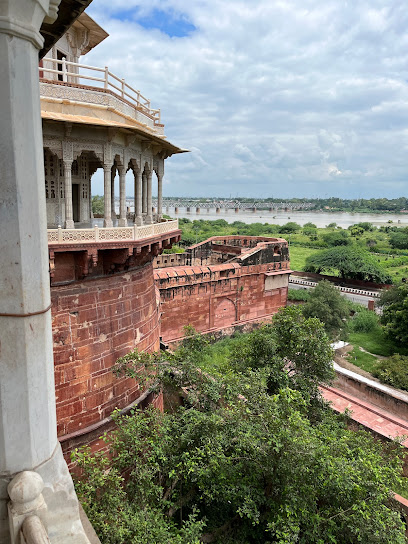
Diwan-I-Am
Discover the grandeur of Mughal heritage at Diwan-I-Am, a historical landmark in Agra Fort showcasing exquisite architecture and rich cultural history.

Zonal park chowpatty
Explore tranquility and vibrant nature at Zonal Park Chowpatty, the perfect retreat for relaxation in the heart of Agra.

Shahi Burj
Explore the Shahi Burj in Agra, a stunning Mughal architectural marvel offering breathtaking views and a glimpse into India's imperial past.

Agra
Discover Agra, home of the magnificent Taj Mahal and rich Mughal history, a must-visit destination for every traveler seeking cultural wonder.

Unmissable attractions to see
Taj Nature Walk
Discover tranquility at Taj Nature Walk, a beautiful park beside the Taj Mahal, offering stunning views and a peaceful retreat in Agra.

Ekta Grden
Explore the enchanting beauty of Ekta Garden, a serene oasis in Fatehabad, Uttar Pradesh, ideal for relaxation and nature lovers.

Y
Discover the serene charm and rich culture of Fatehabad, a hidden gem in Uttar Pradesh that offers unique experiences for every traveler.

Dr. Ambedkar statue
Explore the Dr. Ambedkar Statue in Fatehabad, Uttar Pradesh - a serene park celebrating the legacy of a great leader amidst nature's beauty.

Essential places to dine
DA pizza hub Fatehabad
Discover authentic Indian cuisine at DA Pizza Hub Fatehabad – where every meal is a celebration of flavor and tradition.

PIZZA SPHERE
Savor authentic Italian cuisine at Pizza Sphere in Fatehabad – a culinary gem offering delicious pizzas and pastas amidst a warm atmosphere.

HR Traders
Discover HR Traders in Fatehabad – A premier sugar shack offering authentic Indian sweets crafted with love and tradition.

Harveli Restaurant
Experience authentic Chinese cuisine at Harveli Restaurant in Agra – where flavors meet tradition in a delightful setting.

Gulsan Mansuri Dhaba
Experience the authentic flavors of India at Gulsan Mansuri Dhaba, where fast food meets traditional dhaba dining in Agra.

Padam Sweet House
Discover authentic Indian fast food and exquisite sweets at Padam Sweet House in Fatehabad, Agra – a culinary gem waiting to be explored.

Ram Dhaba
Experience authentic Indian fast food at Ram Dhaba in Fatehabad - where flavor meets convenience!

Maa Peetambra Dhaba
Experience authentic Indian fast food at Maa Peetambra Dhaba, where every meal is a flavorful journey into local culinary traditions.

Fatehabad Chaupati
Experience the vibrant flavors of fast food at Fatehabad Chaupati - where culinary delight meets local culture in Agra.

Purana Chauhan Dhaba
Discover the authentic taste of India at Purana Chauhan Dhaba in Fatehabad, Agra – where every meal is a celebration of flavors.

Markets, malls and hidden boutiques
Fatehabad, Uttar Pradesh 283111
Discover the essence of Indian cuisine at Fatehabad's vibrant grocery store, featuring authentic ingredients and local delicacies.

Fatehabad
Explore the vibrant local culture, unique stores, and authentic experiences in Fatehabad, a charming town close to Agra in Uttar Pradesh.

Anurag Chakki Ata Pishai
Discover the authentic taste of India at Anurag Chakki Ata Pishai, a premier destination for high-quality flour in Agra.

Pusha General Store
Explore Pusha General Store in Fatehabad for authentic gifts and souvenirs reflecting the rich culture of Uttar Pradesh.

Shivam Kirana Store
Discover the local charm of Shivam Kirana Store in Fatehabad, where everyday essentials meet unique local treasures.
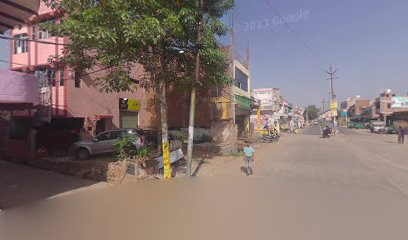
Sajuttin Khan General Store
Discover the authentic charm of Fatehabad at Sajuttin Khan General Store, where local culture meets everyday shopping.

Pavan General Store
Explore local flavors and essentials at Pavan General Store in Fatehabad, Agra, a must-visit for any traveler seeking an authentic experience.
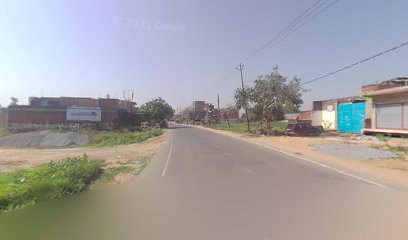
Om Sai Gift & Jewellery
Explore a treasure trove of exquisite jewelry at Om Sai Gift & Jewellery in Agra, where tradition meets contemporary elegance.
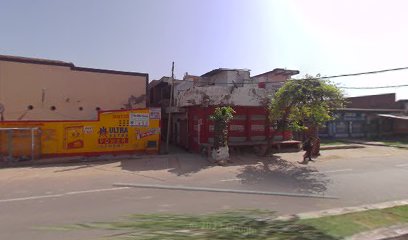
Abhishek General Store
Discover the charm of Uttar Pradesh at Abhishek General Store, your go-to destination for traditional Indian sweets and snacks in Fatehabad.

Shree Radha Rani Store
Explore Shree Radha Rani Store in Fatehabad for unique jewelry, local crafts, and essential supplies that capture the essence of Uttar Pradesh.

Essential bars & hidden hideouts
The Salt Cafe
Experience a culinary adventure at The Salt Cafe, where diverse flavors meet vibrant ambiance, just steps from the Taj Mahal.

Molecule Agra
Discover the vibrant culinary scene at Molecule Agra, where exquisite flavors and a lively atmosphere create unforgettable dining moments.

The Palm Burj - Best Rooftop | Best Lounge | Best Club | Best Pub | Best Restaurant in Agra
Discover Agra's top rooftop lounge at The Palm Burj, where exquisite dining meets stunning views and vibrant nightlife.

Two Saints Bar and Kitchen
Savor the flavors of India and beyond at Two Saints Bar and Kitchen, Agra's premier dining destination for food lovers.

Cafe TC Agra
Experience the vibrant flavors and lively atmosphere at Café TC Agra, the perfect spot for tourists in search of great food and nightlife.
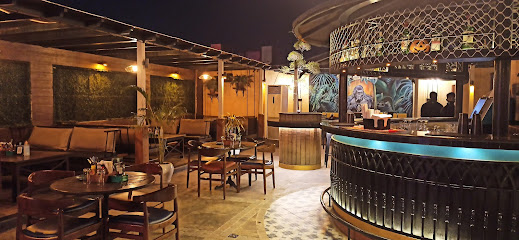
Club Rush
Discover the lively nightlife at Club Rush in Agra, where dining, dancing, and socializing come together for an unforgettable experience.
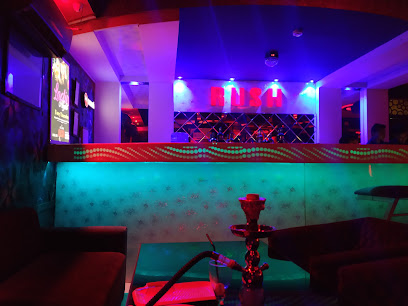
Pub Zee bar and lounge
Discover the lively atmosphere of Pub Zee Bar and Lounge in Agra, where delicious grilled dishes and vibrant nightlife await!

Level 4 Rooftop Lounge
Experience breathtaking views and delicious cuisine at Agra's premier rooftop lounge, where relaxation meets elegance.

Patiala House Rooftop Cafe - Best Rooftop cafe in Fatehabad Road, Agra
Experience the breathtaking views of the Taj Mahal while indulging in delicious cuisine at Patiala House Rooftop Cafe in Agra.

Onyx Bar
Experience the elegance of Onyx Bar in Agra, where sophisticated drinks meet a chic atmosphere for the perfect unwind after exploring iconic landmarks.

Local Phrases
-
- Helloनमस्कार
[Namaskar] - Goodbyeअलविदा
[Alvida] - Yesहां
[Haan] - Noनहीं
[Nahi] - Please/You're welcomeकृपया
[Kripya] - Thank youधन्यवाद
[Dhanyavaad] - Excuse me/Sorryमाफ़ कीजिए
[Maaf kijiye] - How are you?आप कैसे हैं?
[Aap kaise hain?] - Fine. And you?ठीक हूँ। और आप?
[Theek hoon. Aur aap?] - Do you speak English?क्या आप अंग्रेज़ी बोलते हैं?
[Kya aap angrezi bolte hain?] - I don't understandमुझे समझ में नहीं आया
[Mujhe samajh mein nahi aaya]
- Helloनमस्कार
-
- I'd like to see the menu, pleaseकृपया मेनू देखना चाहूँ
[Kripya menu dekhna chahoon] - I don't eat meatमैं मांस नहीं खाता
[Main maans nahi khaata] - Cheers!चियर्स!
[Cheers!] - I would like to pay, pleaseकृपया मैं भुगतान करना चाहूँ
[Kripya main bhugtan karna chahoon]
- I'd like to see the menu, pleaseकृपया मेनू देखना चाहूँ
-
- Help!बचाओ!
[Bachao!] - Go away!चले जाओ!
[Chale jao!] - Call the Police!पुलिस को बुलाओ!
[Police ko bulao!] - Call a doctor!डॉक्टर को बुलाओ!
[Doctor ko bulao!] - I'm lostमैं खो गया हूँ
[Main kho gaya hoon] - I'm illमुझे बीमारी है
[Mujhe bimari hai]
- Help!बचाओ!
-
- I'd like to buy...मैं ... खरीदना चाहूँ
[Main ... kharidna chahoon] - I'm just lookingमैं बस देख रहा हूँ
[Main bas dekh raha hoon] - How much is it?यह कितने का है?
[Yeh kitne ka hai?] - That's too expensiveयह बहुत महंगा है
[Yeh bahut mehnga hai] - Can you lower the price?क्या आप कीमत कम कर सकते हैं?
[Kya aap keemat kam kar sakte hain?]
- I'd like to buy...मैं ... खरीदना चाहूँ
-
- What time is it?अब कितने बजे हैं?
[Ab kitne baje hain?] - It's one o'clockएक बजे हैं
[Ek baje hain] - Half past (10)(10) के बाद हो
[(10) ke baad ho] - Morningसुबह
[Subah] - Afternoonदोपहर
[Dopahar] - Eveningशाम
[Shaam] - Yesterdayकल
[Kal] - Todayआज
[Aaj] - Tomorrowकल
[Kal] - 1एक
[Ek] - 2दो
[Do] - 3तीन
[Teen] - 4चार
[Char] - 5पाँच
[Paanch] - 6छह
[Chhah] - 7सात
[Saath] - 8आठ
[Aath] - 9नौ
[Nau] - 10दस
[Das]
- What time is it?अब कितने बजे हैं?
-
- Where's a/the...?... कहाँ है?
[... kahan hai?] - What's the address?पता क्या है?
[Pata kya hai?] - Can you show me (on the map)?क्या आप मुझे दिखा सकते हैं (नक्शे पर)?
[Kya aap mujhe dikha sakte hain (naksha par)?] - When's the next (bus)?अगली (बस) कब है?
[Agli (bus) kab hai?] - A ticket (to ....)एक टिकट (.... के लिए)
[Ek ticket (.... ke liye)]
- Where's a/the...?... कहाँ है?
History of Fatehabad
-
Fatehabad, a neighborhood in Agra, derives its name from 'Fateh' meaning victory, and 'abad' meaning settlement. Established during the reign of Mughal Emperor Akbar in the late 16th century, it was created as a strategic outpost to secure the region and facilitate access to the nearby city of Agra, which was then the capital of the Mughal Empire.
-
Fatehabad is home to several architectural landmarks from the Mughal period, reflecting the grandeur and cultural richness of the era. Notable structures include the Fatehabad Mosque, which showcases exquisite Mughal architecture with intricate carvings and expansive courtyards, serving as a testament to the religious and cultural amalgamation characteristic of the time.
-
The Fatehabad Fort, built by Akbar, was strategically positioned to guard the northern approach to Agra. This fortification played a crucial role during various conflicts in the region and served as a military base for the Mughal forces. Its remnants still evoke the historical significance of the Mughal Empire's military architecture.
-
Today, Fatehabad stands as a vibrant neighborhood that embodies the historical confluence of Mughal and local culture. The area is characterized by its bustling markets, traditional crafts, and the ongoing celebration of festivals that blend Mughal traditions with local customs, making it a living museum of cultural heritage.
-
In recent years, Fatehabad has attracted attention from tourists seeking to explore the rich history of Agra beyond the iconic Taj Mahal. Efforts to promote heritage conservation in the neighborhood have led to the restoration of historical sites and the establishment of cultural programs that educate visitors about the Mughal influence in the region, thus enhancing the cultural tourism experience.
Fatehabad Essentials
-
Fatehabad is easily accessible from other neighborhoods in Agra. The main entry point is through the Agra Railway Station, which connects to major Indian cities. From there, you can take a taxi or an auto-rickshaw to Fatehabad, which is approximately 10 km away. Local buses also run frequently from the station to Fatehabad. If you're coming from the Agra Fort area, a short rickshaw ride will get you there in about 15 minutes.
-
Fatehabad is a small neighborhood, making it convenient to explore on foot. For longer distances, auto-rickshaws and cycle rickshaws are available and are an affordable option. Local buses operate in and around Fatehabad, but they may not be the most comfortable choice for tourists. Bicycles can be rented from local shops for those who prefer to pedal around and experience the area at a leisurely pace.
-
Fatehabad is generally considered safe for tourists during the day, but it's advisable to exercise caution, especially at night. Areas around the Taj Mahal can attract petty crime like pickpocketing, so keep an eye on your belongings. It’s best to avoid secluded streets after dark and be mindful of your surroundings, especially in crowded markets.
-
In case of emergencies, dial 100 for police assistance or 102 for medical emergencies. There are several hospitals and clinics in Agra, including those near Fatehabad. It's recommended to have travel insurance that covers medical emergencies. For minor health issues, pharmacies are available, and local residents can guide you to the nearest one.
-
Fashion: Do dress modestly, especially when visiting religious sites or local homes. Avoid revealing clothing. Religion: Do respect local customs and practices, such as removing shoes before entering temples. Public Transport: Do be polite and offer your seat to elderly passengers. Don't eat or drink in public transport to maintain cleanliness. Greetings: Do greet with a friendly 'Namaste' with hands pressed together. Eating & Drinking: Do try local food from reputable places and accept offers of food graciously. Don't refuse hospitality, as it may offend your hosts.
-
To experience Fatehabad like a local, visit the bustling markets where you can find fresh fruits, vegetables, and local handicrafts. Engage with vendors, as many are happy to share their stories. Try the street food, particularly chaat, from well-known stalls, but ensure they maintain cleanliness. Participating in local festivals or events can also provide deeper insight into the culture. Lastly, consider joining a guided tour for a more informative experience of the area’s history.











